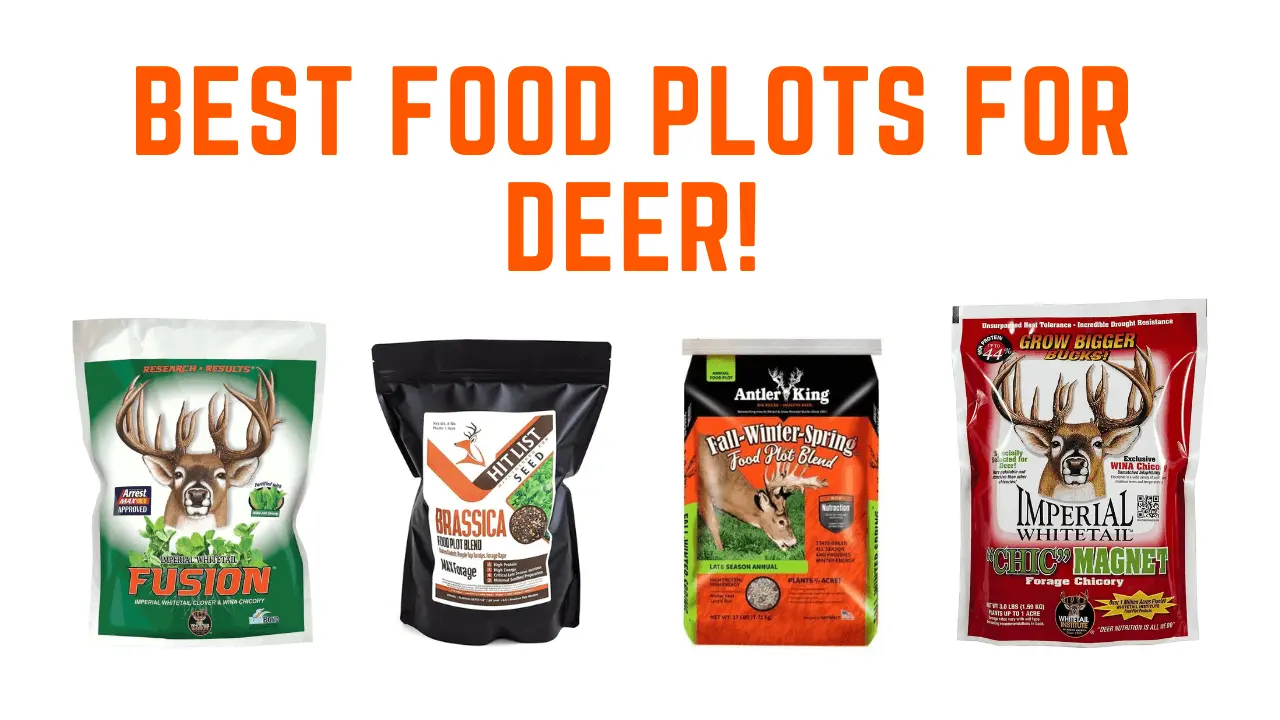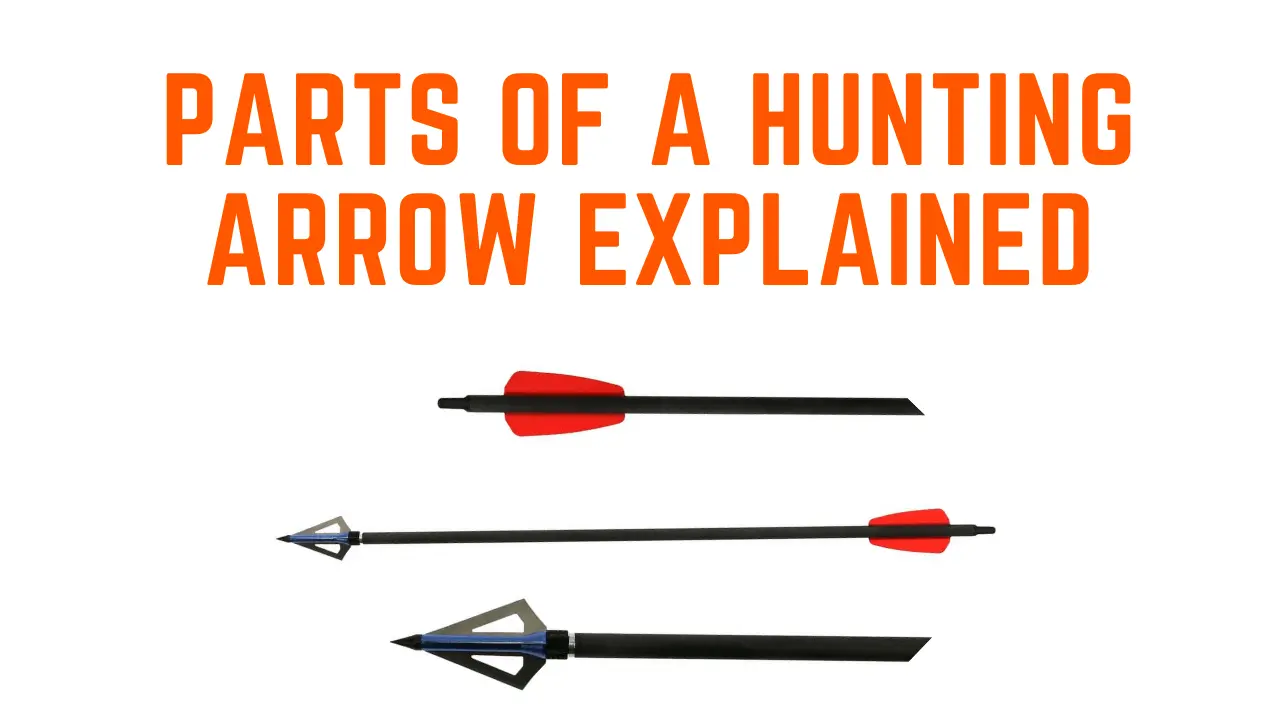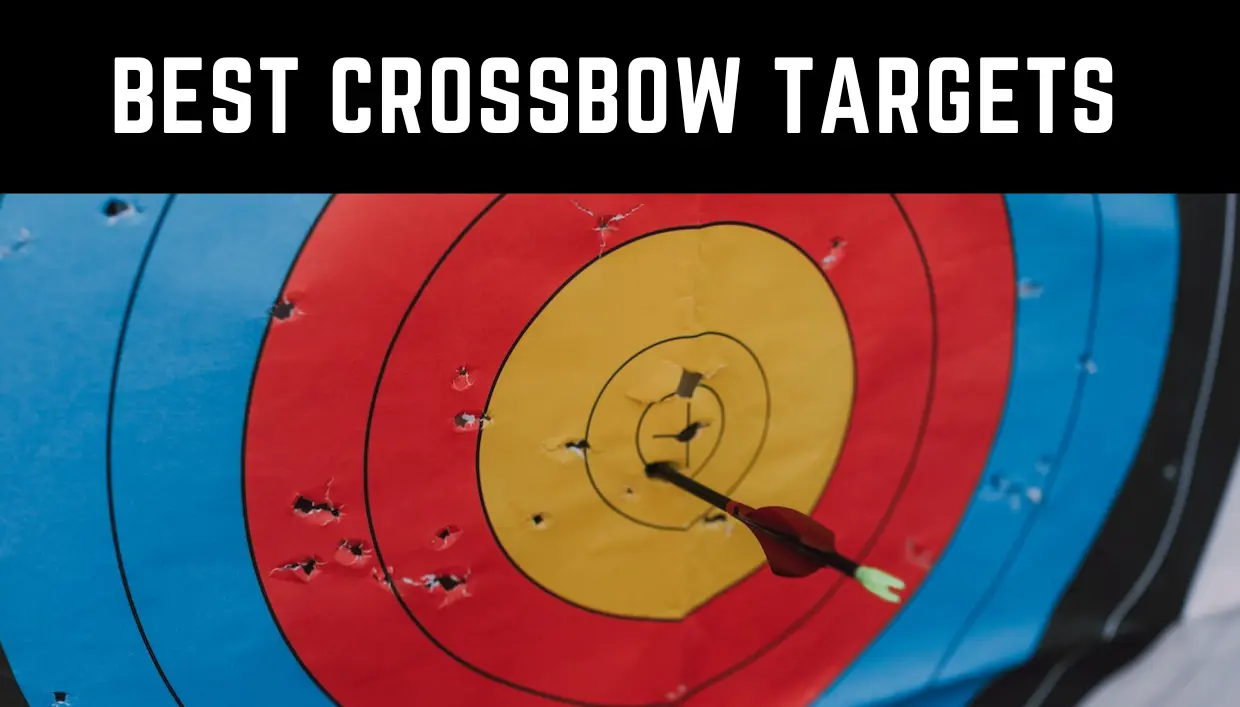The Best Food Plot for Deer in 2023- A Complete Buyer’s Guide
It is hard for every hunter to search for the best food plot for deer when hunting. And they may even seem unnecessary, and you might wonder why not just go out with your equipment and start hunting right away. Well, It’s just not that easy.
Using the correct food plots can be extremely useful when discussing deer hunting, especially whitetails. Having the right food plot mix can help you attract your hunt with ease, which is one of the primary reasons professional hunters place such a high priority on it.
You might think it can be easy to prepare one, but it is harder than you think. It takes sweat, time, and money to prepare the best food plot for deer and attain the maximum benefit from it. This is why we have decided to prepare a complete buying guide so you can get the most bang for your buck.
First, let me explain some basics you should know before we get into our list of the best food plots for deer.
Our Top Deer Food Plot Picks
| Food plot for Deer | Name | Best Features | Cutting Diameter |
|---|---|---|---|
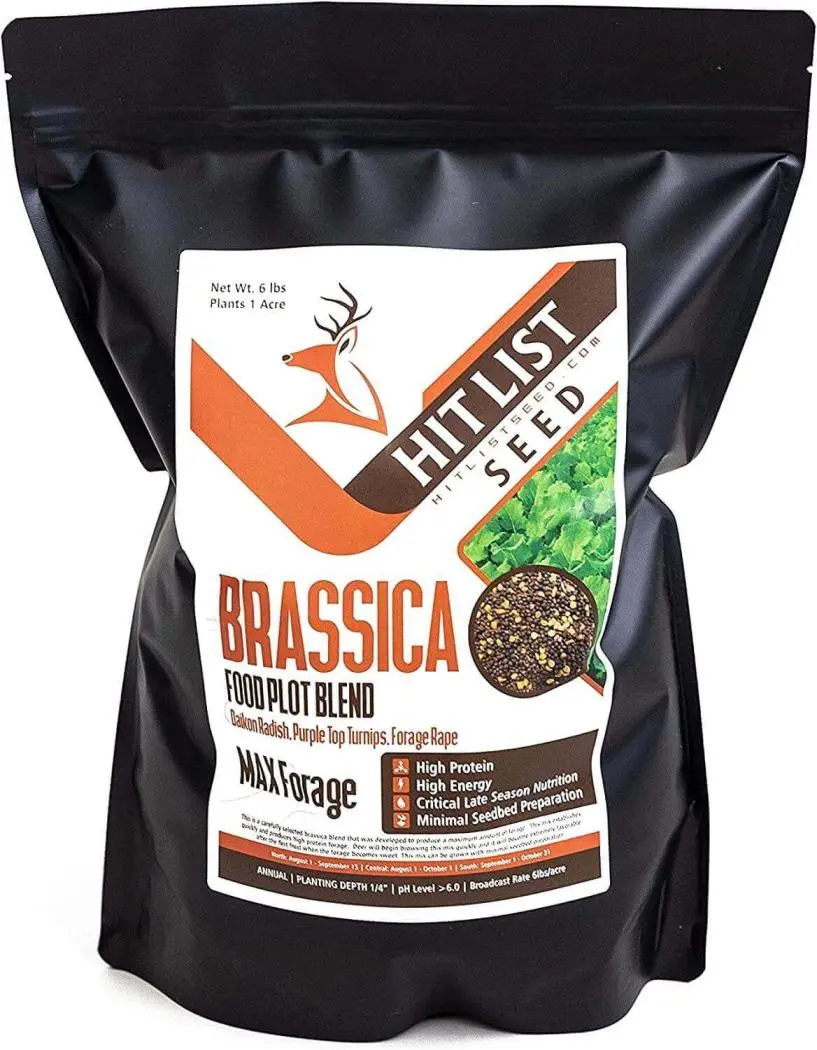 |
Hit List Seed Brassica Blend | Best fo Beginners Requires little maintenance |
Check Price on Amazon |
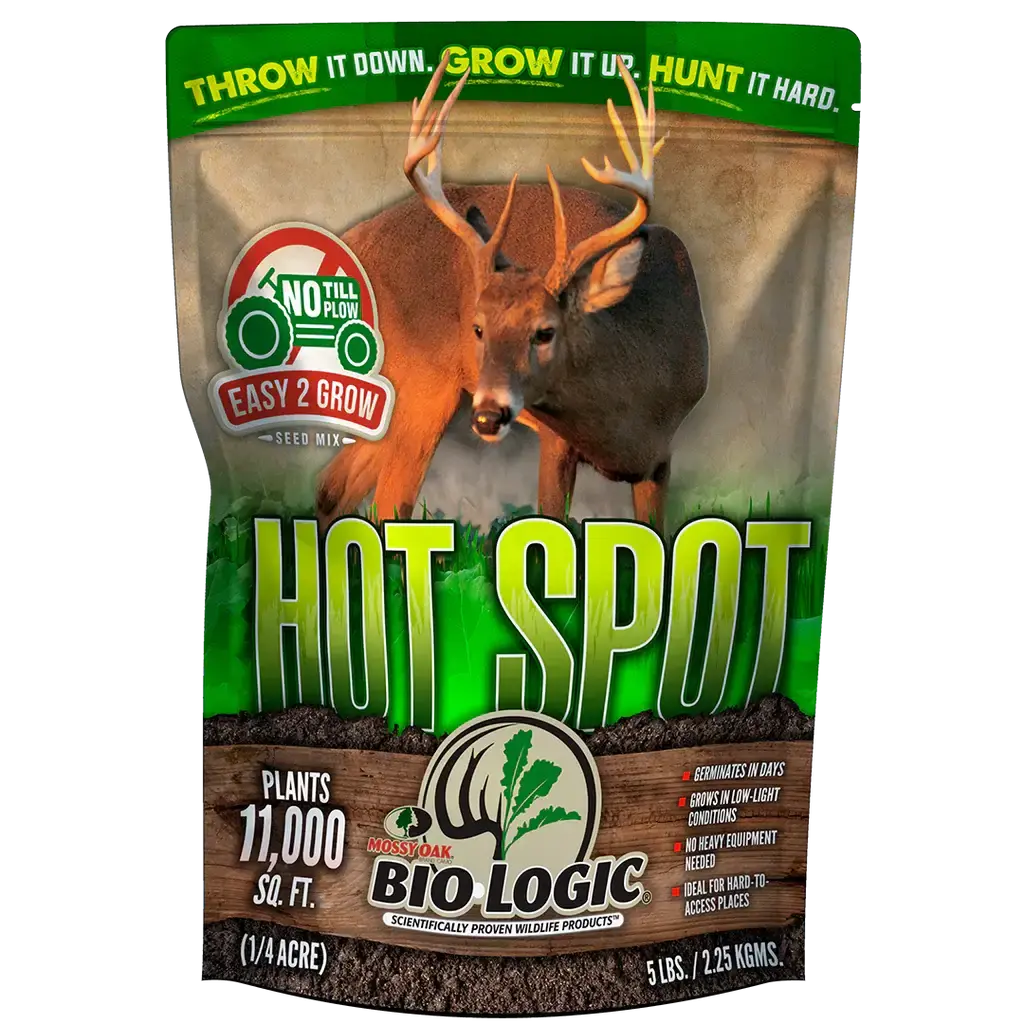 |
Mossy Oak Biologic Hot Spot | Best No-Till deer food plot Extra fast growth |
Check Price on Amazon |
 |
Whitetail Institute Imperial Clover | Best Nutrition for Deer Has high amount of protein |
Check Price on Amazon |
Basics of Food Plot Mix
A food plot mix is a seed combination of different plants planted in desired areas to attract potential game. There are different food plot mixes available depending on the type of season and kind of hunt you’re after.
In this case, we will be sticking with deer only. You can prepare your own food plot mix or purchase one prepared by experts in the food industry. In both cases, knowing their nutrients and seeds is very important.
Furthermore, a good food plot mix can hugely increase the chance of a good hunt. If you have prepared a diverse plot mix, this might attract other non-target species, such as songbirds and pollinators.
By providing a good plot mix, you attract your target to benefit from the produce by gaining health and nutritional value. Below is a list of the 10 best deer food plots in 2023 that have dozens of other benefits.
List of 10 Best Deer Food Plot Mixes
1. Whitetail Institute Imperial Clover (Good for Fall)

Key Features:
Pros:
Cons:
Product Details
If you are into attracting deer and giving them a rich source of protein for development, consider choosing this clover as it is one of the best affordable options. Its immense drought tolerance allows it to thrive during the early season once established.
Moreover, this is also good for the deer whose eating habits aren’t transitioned adequately from summer to winter. The seeds of this plant produce clover with high protein, which will help deer who have not grown antlers, muscles, or bones to grow them in the future.
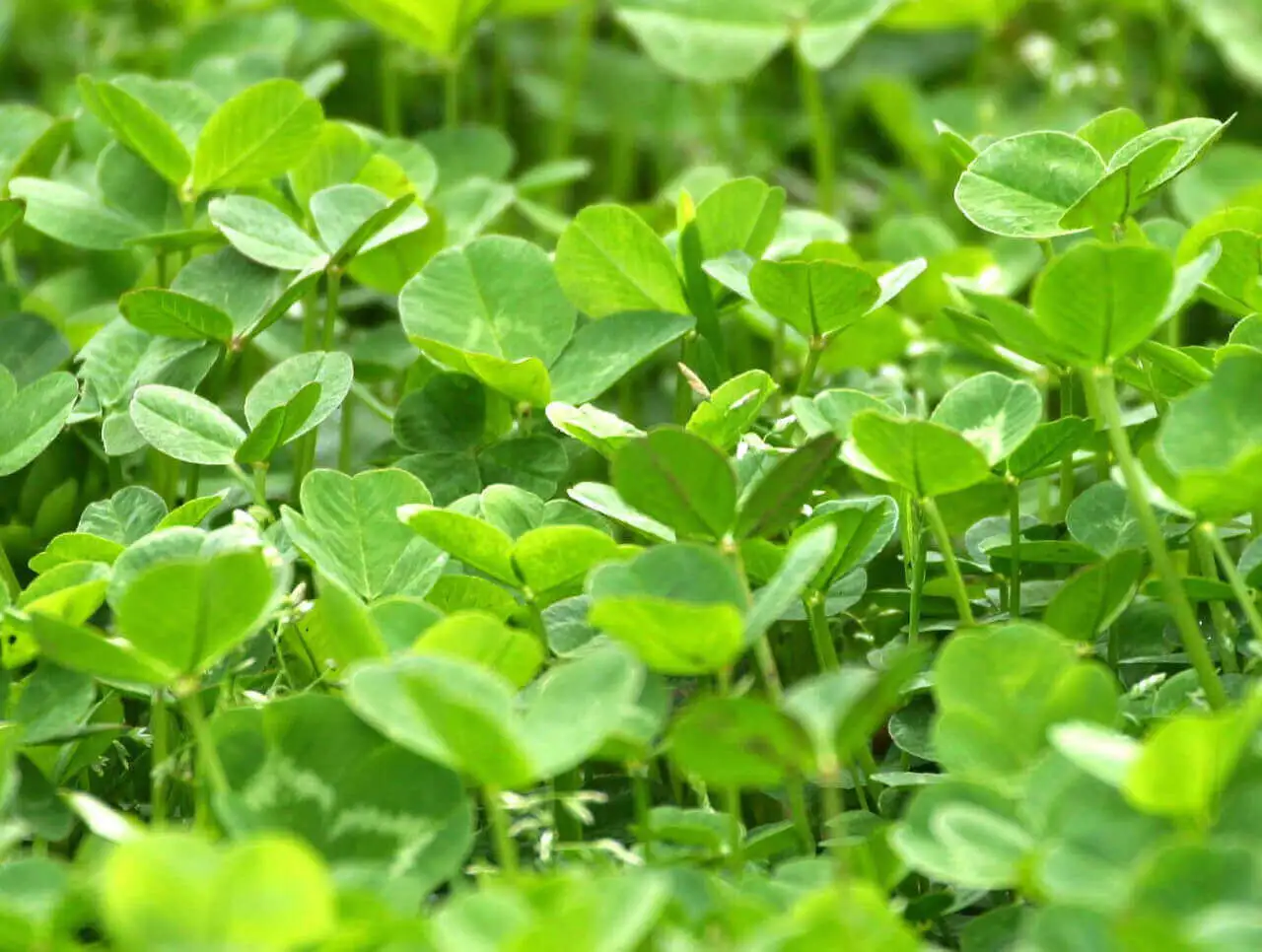
For hunters who live in Northern areas and want some strong plot mix, Imperial Whitetail clover is not prone to even the harshest of cold situations.
Moreover, the RainBond seed coating makes them more resistant to rot and lasts for up to 5 years. The seeds are eligible for growing almost anywhere worldwide; some instructions are mentioned on the pack itself.
2. Hit List Seed Brassica Blend (Beginners Pick)

Key Features:
Pros:
Cons:
Product Details
This food mix from Brassica blend is another great option for new beginners. One thing beginners hate is visiting the food mix every day and giving regular checks on their progress. This food mix eliminates that issue, and the seeds require minimal equipment and bed preparation to grow.
Furthermore, this Brassica blend provides fantastic results with the Dder food choices. Almost all the whitetails absolutely love this food mix and there is no way they are going to be able to resist it.
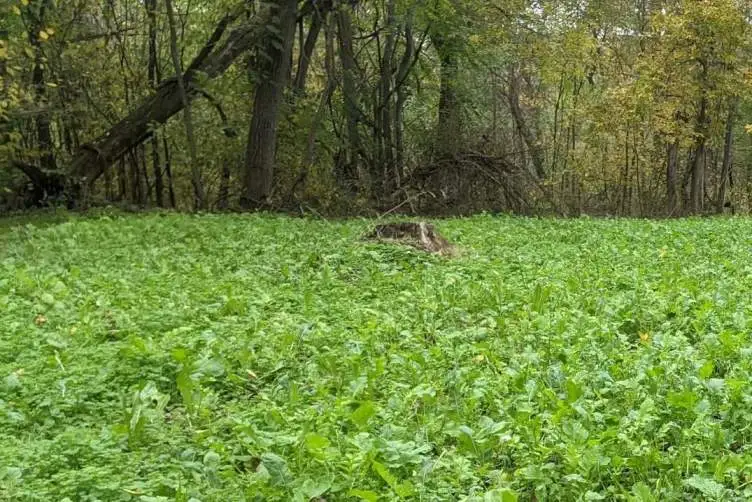
Just like it says in the box description, the food mix is designed for early-season hunting due to the leafy forage provided by the forage rape . However, if you can take care of a few things, the bulbs from the turnips and radishes can also make late-season hunting possible.
Last but not least, the blend of Daikon Radish, Purple top, and Forage Rape can provide you with up to three tons of forage per acre, which is quite A LOT.
3. Whitetail Institute PowerPlant (Southern Hunt)
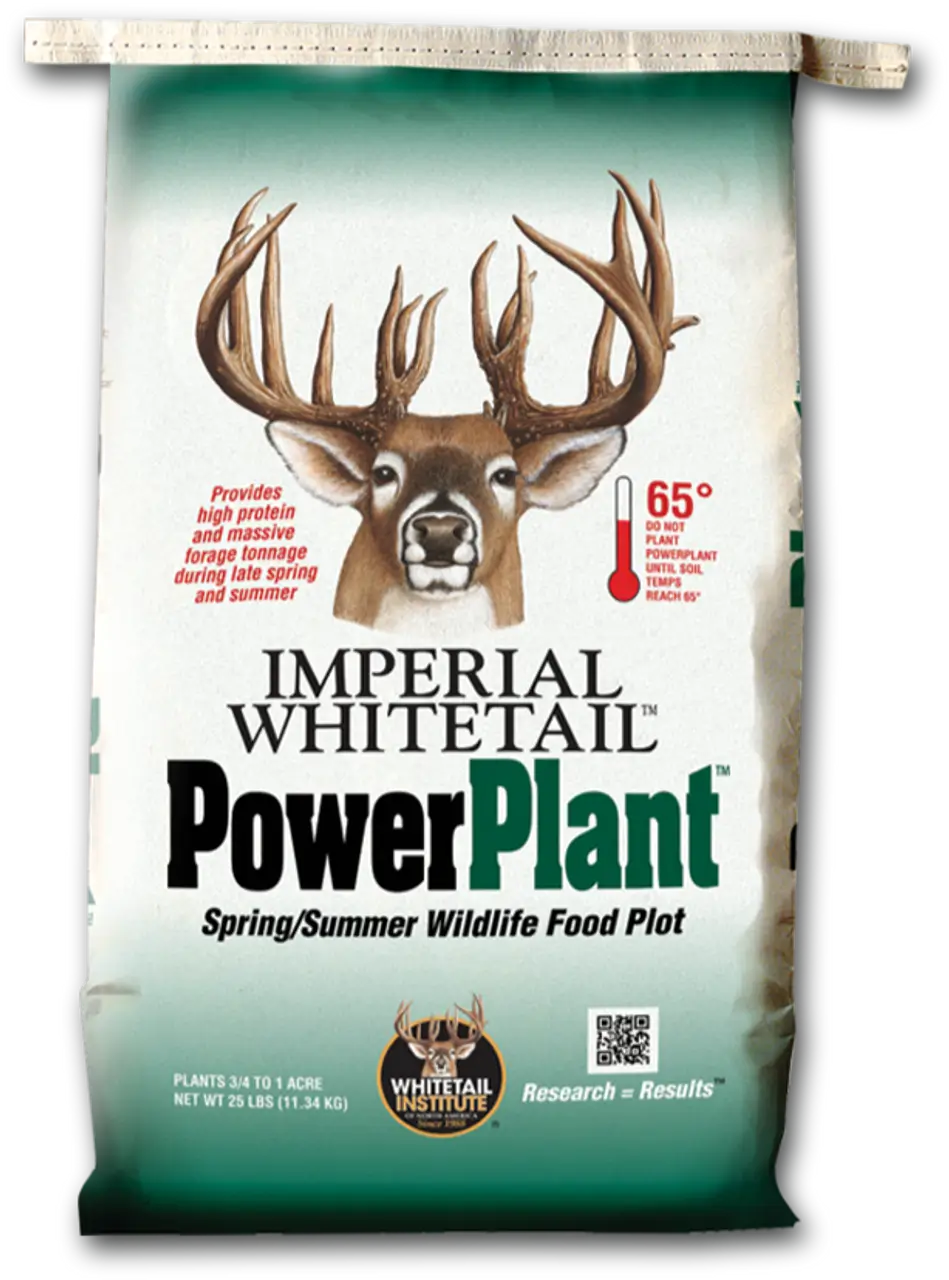
Key Features:
Pros:
Cons:
Product Details
Generally, most food plots are oriented towards intermediate and beginner hunters, but PowerPlant seems to have a different direction as it really is one of the best food plots for deers.
This food plot is presented for most experienced hunters as big price tags are never a problem for them. Made specifically for the Southern States, this food plot can handle extreme drought conditions comparatively. Similarly, compared with other food mixes, this one will need a lot more pounds of spread per acreage.
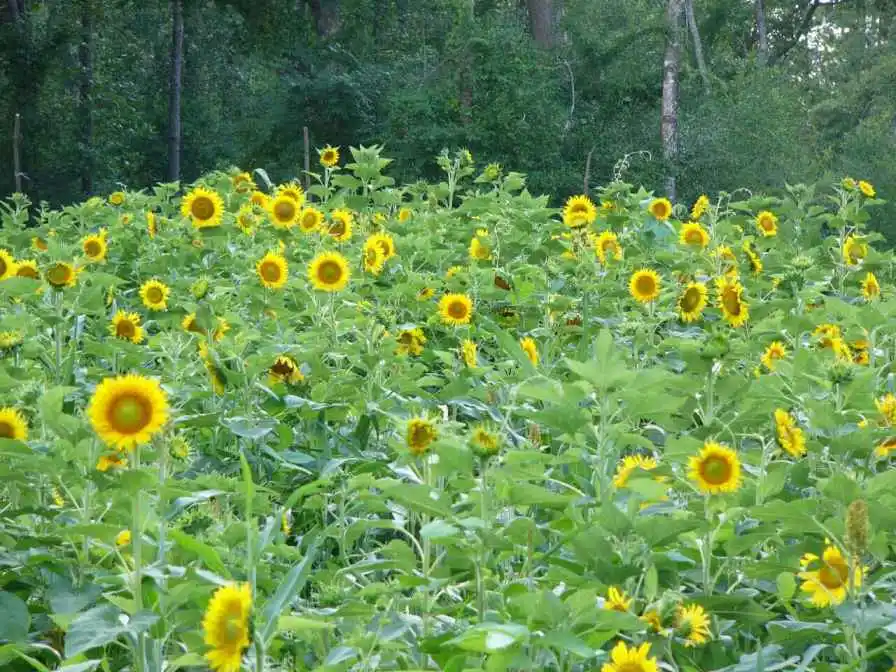
Compared to other bean and pea plantings, this blend can withstand grazing much better. Forage soybeans and peas form the basis of this blend, and unlike agricultural soybeans they don’t get stemmy at all. The plant can continue to grow even if deer graze on it once it has been established.
Furthermore, it includes sunn hemp and small amounts of sunflowers to encourage vine legumes to grow vertically rather than along the ground so they can maximize their production.
4. Mossy Oak Biologic Green Patch Plus (One for All)
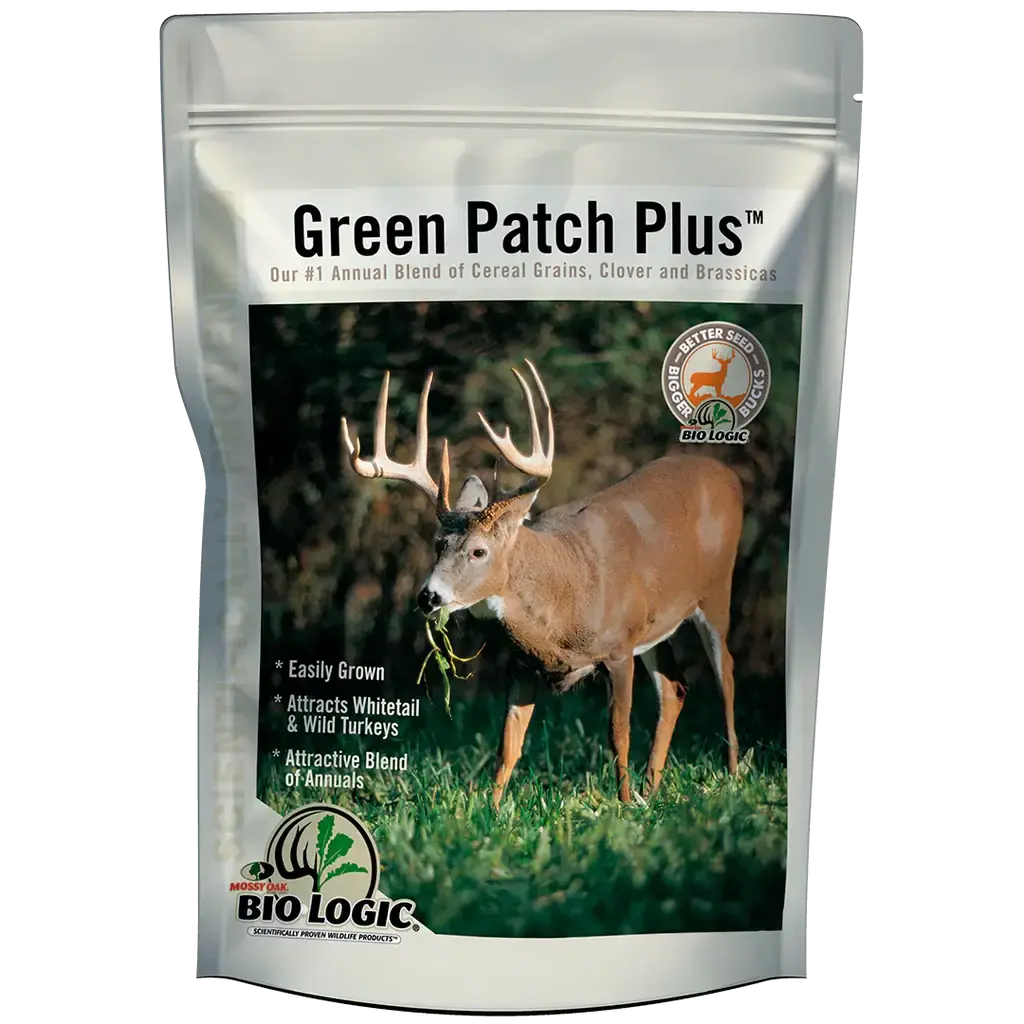
Key Features:
Pros:
Cons:
Product Description
Starting with this blend’s amazing combination of different seasons. It can go well with all kinds of seasons. If you’re tired of working in Summers or Winters specifically, The Green Patch Plus is just what’s needed. These seeds are drought resistant, so you can be calm with their reliability.
The nutritional aspect is covered by the grains while the brassicas and clovers work to attract the deer to the food plot.. This makes Green Patch Plus the perfect remedy for hunters who don’t like to wait for their target.
It will be the oats and wheat that do the magic by forming as quickly as possible. This will cause the deer to come for them, and even after this, the clover and brassicas will keep forming at the late end of the season. So there is no need to wait for months and it doesnt irritate the hunters.
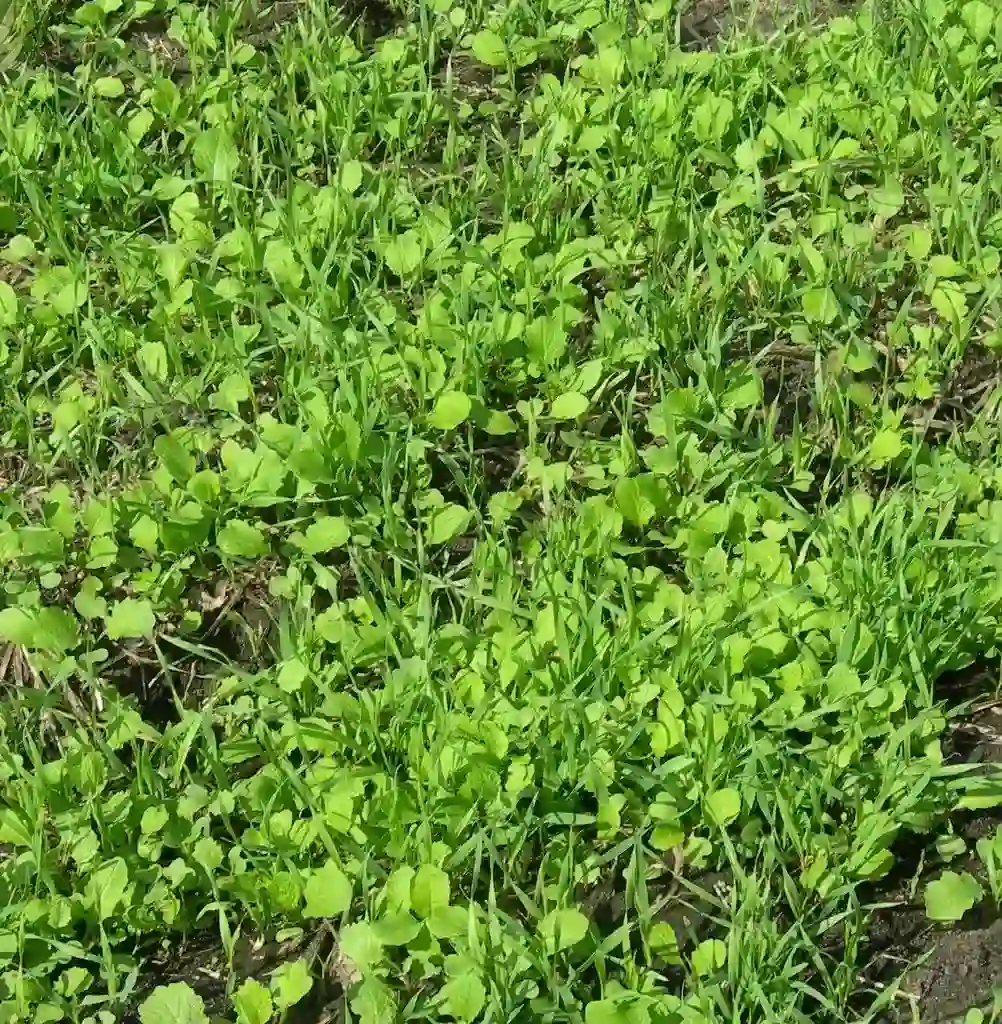
The blend is more cost-effective than other ones usually available in the market. No matter what size your deer food plot is, the Green Patch Plus mix will provide your herd with all the variety of nutrients it needs to grow.
Plantation Time
The food plot can be planted anywhere around the year, but the best time for planting is in the late summer, with a planting rate of 40 pounds per acre.
Overall, the Green Patch Plus is one of the best food plots for deer that wouldn’t disappoint you.
5. Antler King Fall/Winter/Spring (Medium Priced)
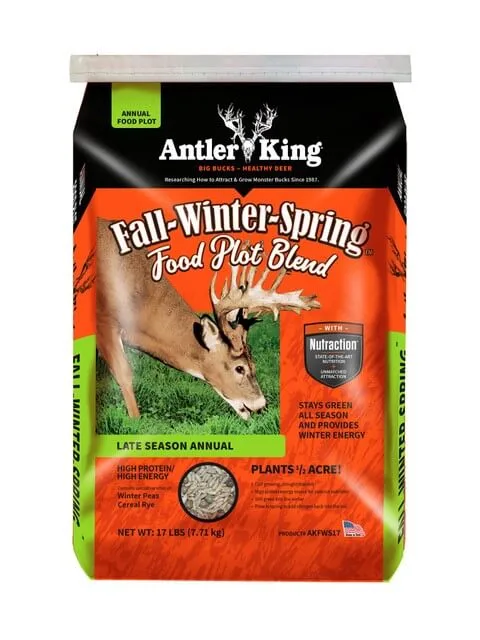
Key Features:
Pros:
Cons:
Product Details
The Antler King mix is one of those which won’t take a lot of time to grow. As mentioned by its manufacturers, the food mix will take a maximum of 10-15 days and will be ready for the deer to have a taste. The 30 percent protein scale makes it rich in nutrients, making it a perfect option for deers to munch on.
With this mix the deer will be able to eat green all season and will also have the necessary energy to survive the winter. The special variety of Fall Rye provides a tender food source with up to fifteen percent protein, even in the coldest winter months.

In addition to their cold tolerance, the Winter Peas can be browsed and eaten by deer virtually throughout their life cycle. While other food plots slow down in the winter, this blend will continue to grow provide the needed nutrients to your potential game.
6. Mossy Oak Biologic New Zealand Maximum (Midwestern pick)
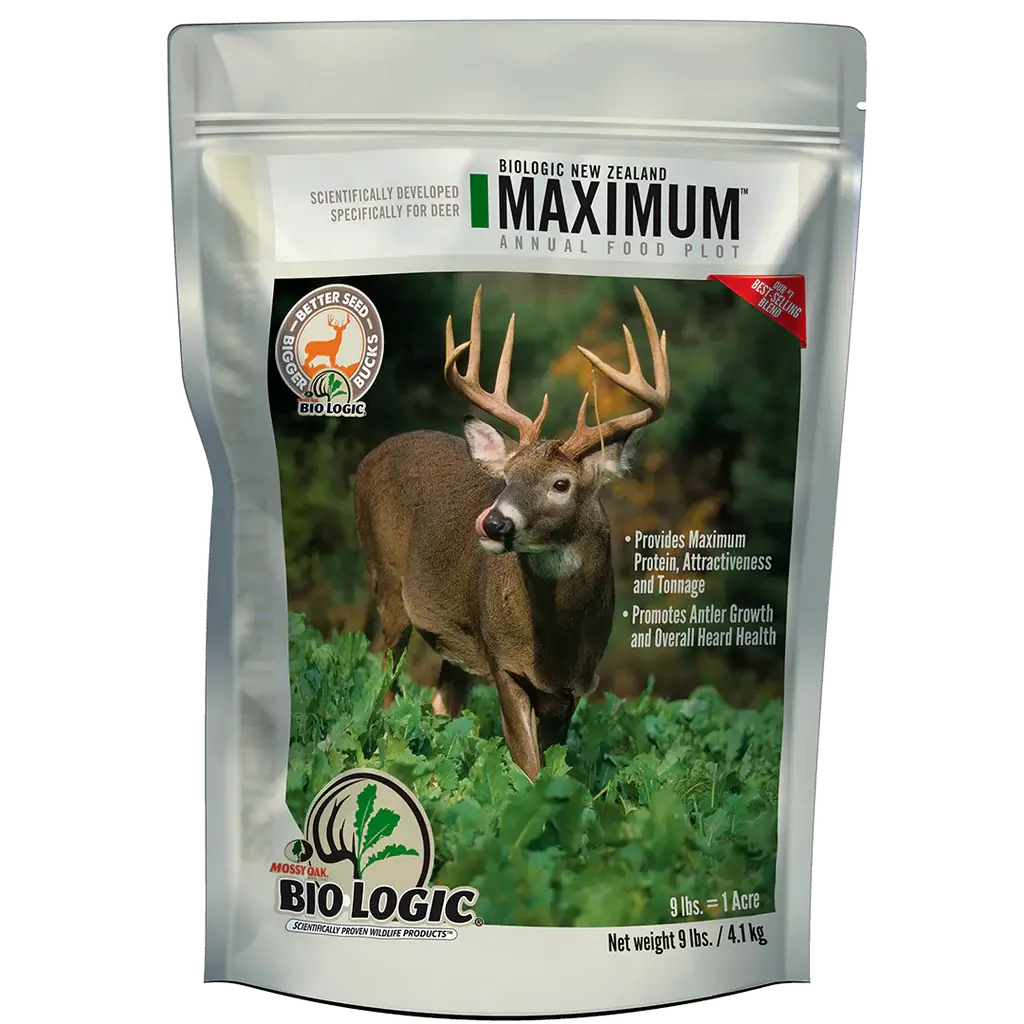
Key Features:
Pros:
Cons:
Product Details
It is a great option for the Midwest, where most of the food mixes require attractiveness, and these Brassicas have it. Plant it at the perfect location, and this Food plot will be irresistible for all the Deers who get a sight of it.
Moreover, they won’t cost you a lot, especially if you are a beginner hunter.
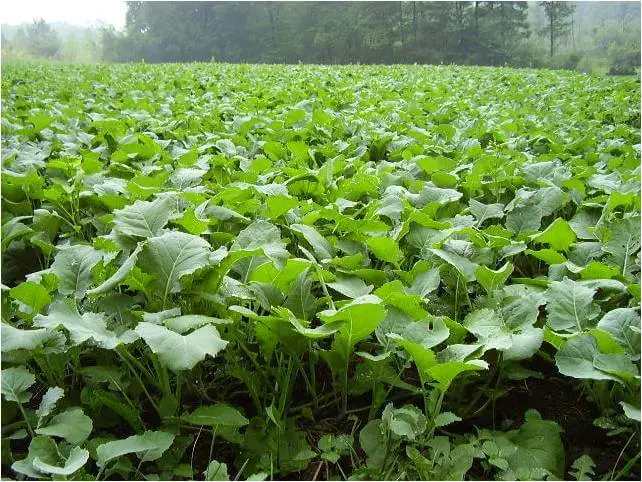
The growth rate is just what an average hunter needs in winter. Even if there’s a giant snowfall, the Deers won’t have any problems finding this food plot. Like its name, we can get maximum forage at a production ratio of 10-15 tons of forage per acre.
Regardless of what soil you are an option, this brassica can grow in all kinds of soil and keep the nutrition stocked for the deer to feed upon. Overall, we would rate this deer food plot a great option for new and even experienced hunters.
7. Whitetail Institute Fusion (High-Quality Plot)
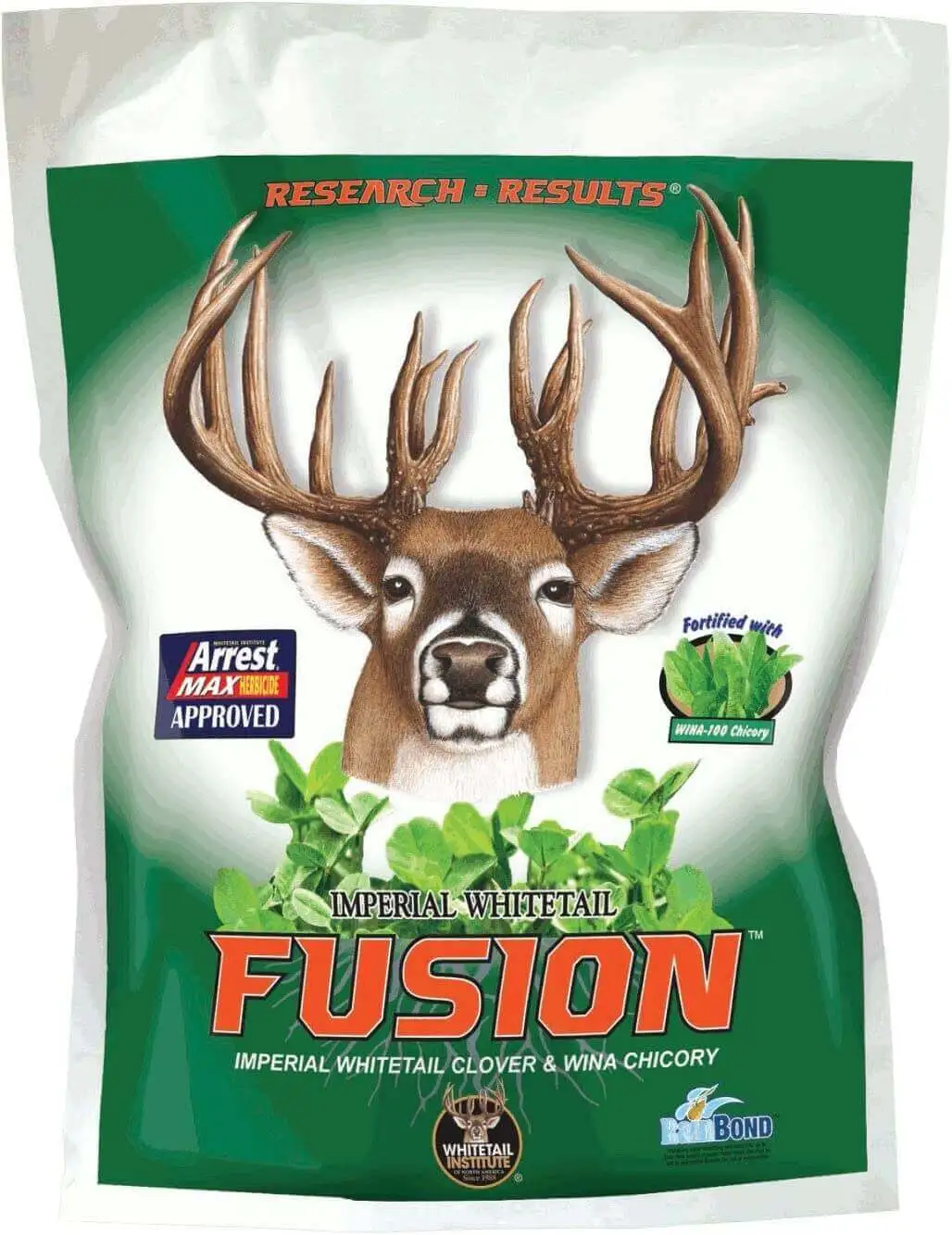
Key Features:
Pros:
Cons:
Product Description
Another great option for all the Whitetail lovers is this food plot which features the latest WINA perennial forage chicory. This might sound like a scientific term, but it is nothing that hard to understand.
It is a high-quality food mix that has enhanced performance with high protein and maximum tonnage during drought and extreme heat conditions. In short, when other food mixes production starts to slow down because of climate changes, the Whitetail Fusion’s growth speeds up even further and provides better results.
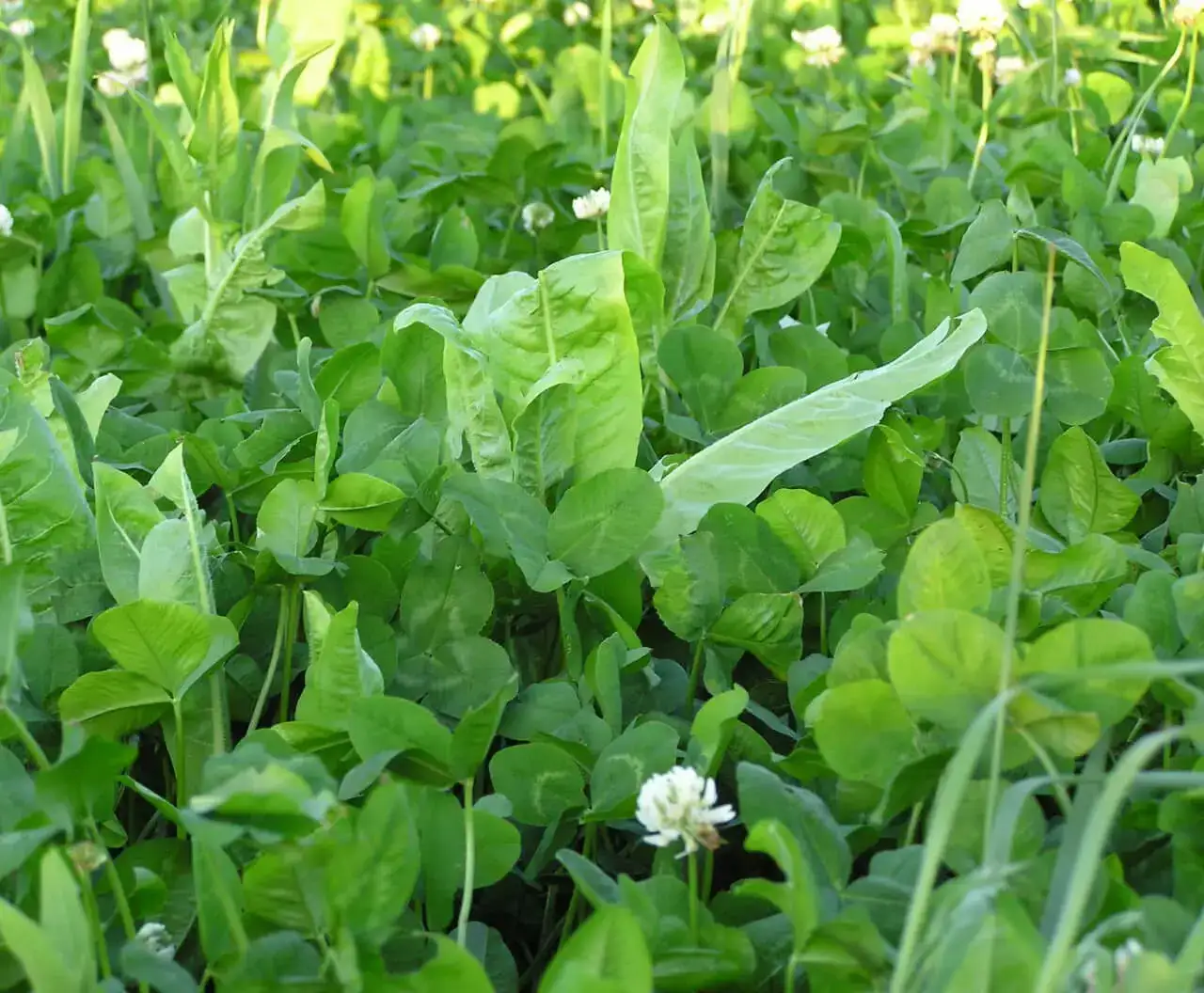
Providing up to 40 percent of protein, you can be assured that you attract the best possible game. The WINA ensures that all the obligatory nutrition is present in the food mix. Moreover, unlike the other ones, these food mixes are specifically designed for deer.
Finally, this food mix is extremely cold tolerant, drought and heat resistant. Moroever, their RainBond seed coating make these seeds last for more than 5 years.
8. Mossy Oak Biologic Deer Radish (Late Season)
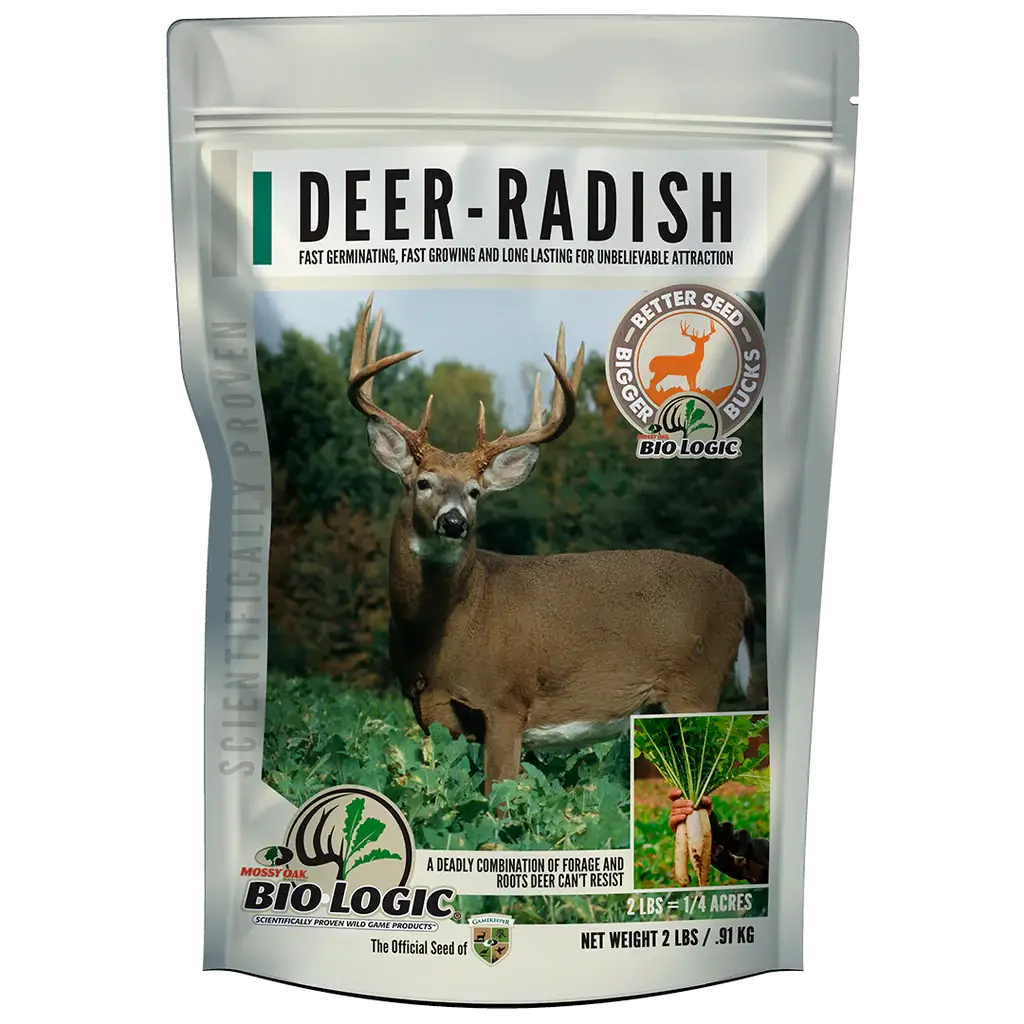
Key Features:
Pros:
Cons:
Product Description
With the leaves and roots, this mix provides double the protein that ensures that the deer can get maximum nutrition from eating ond this food plot. This specific annual pack from Mossy Oak will help your deer get attractive when planted in no time.
The best thing about them is that they will also grow radishes. Their taste and nutritional pull make it completely irresistible for deer to resist this craving. The entire Deer Radish planting is edible from top to bottom making the plantation plenty for largest of herds.
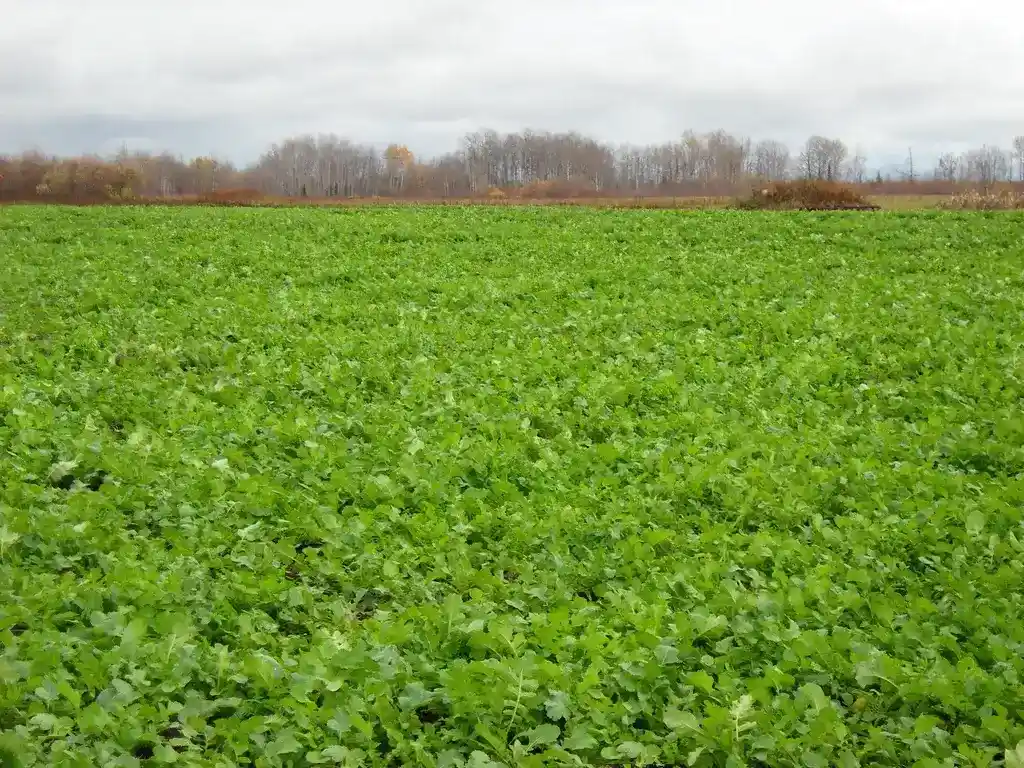
These Radishes grow in all kinds of soil, providing the right moisture. Even if you are a beginner, you can plant it by yourself. It produces enough forage almost six-eight tons of plantation per acre.
The best time to use it is late in the season. However this is one of the best food plots for drawing deer throughout hunting season.
9. Whitetail Institute Chic Magnet (Drought Specialist)
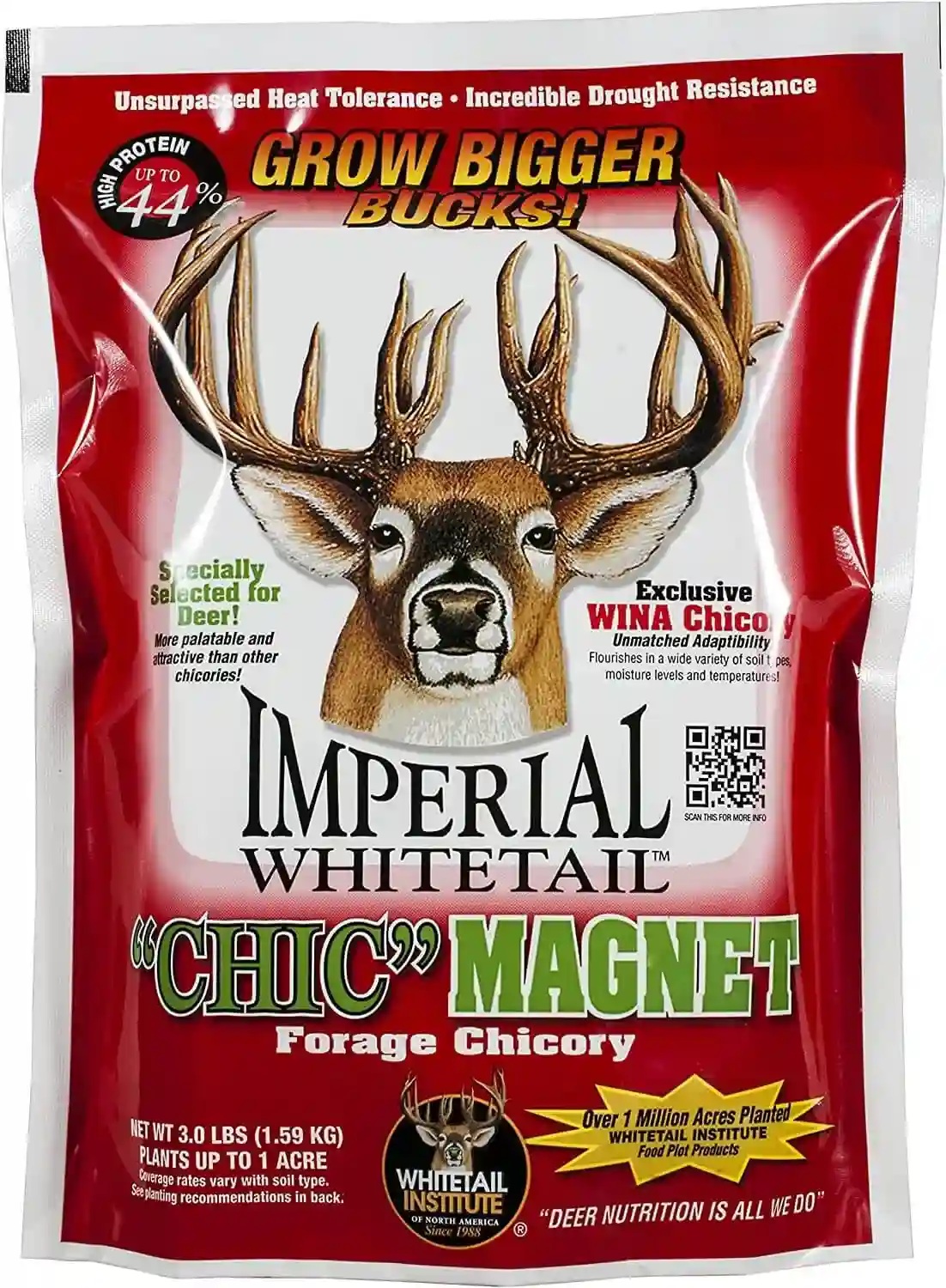
Key Features:
Pros:
Cons:
Product Descriptions
Whitetail Institute Chic Magnet, a source of rich protein and a highly attractive food plot, features one of the latest WINA technologies in the market. This technology can do more than just attract some deer towards itself. From providing all the important nutrition for the deer to ensuring their growth isn’t affected, WINA is all about maximizing the food mix’s quality.
Furthermore, another great news for people who love to plant in Summer is that this forage is highly drought resistant. The roots can go as much as 3 feet in the ground, which means no storm will take away your plant within a single blow.
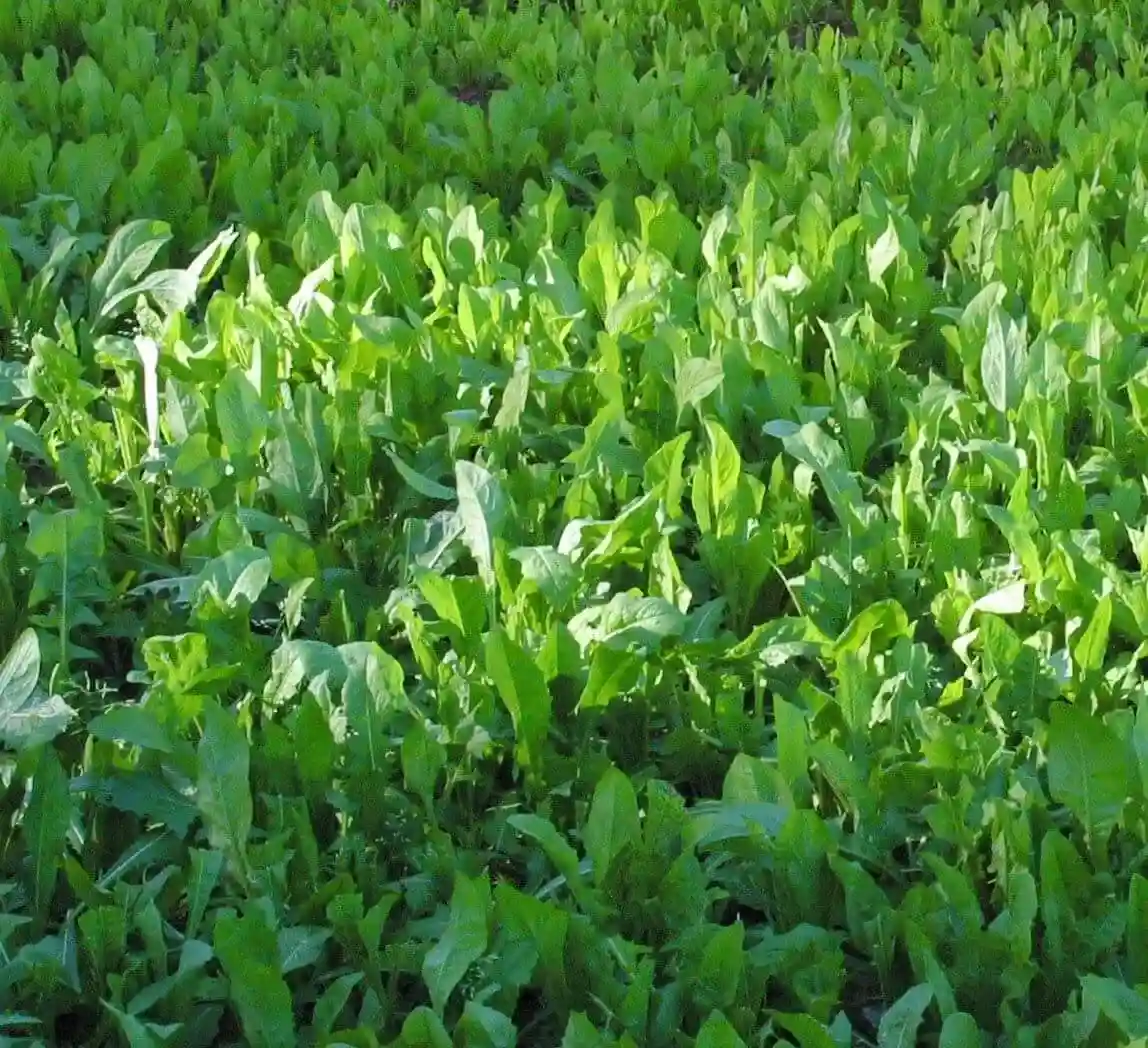
Deer love to eat tender and soft plants. The forage can stay soft for a long time without getting hard at all.
If you don’t like planting seeds alone and always want to partner them with other seeds you can do this with this blend. However, randomly mixing the seeds might not be such a great idea. We recommend you self-study the behavior and combination of seeds before randomly mixing them.
Finally, they are extremely drought, heat, and cold-resistant. They can easily last for a period of 3 years.
10. Mossy Oak Biologic Hot Spot (Easy Growth/ No-Till)

Key Features:
Pros:
Cons:
Product Description
Mossy Oak Biological Hotspot is the best pick if you want a blend that can become your last-minute option. Luckily, this brand has successfully designed a food mix that can easily planted with the least amount of effort.
Moreover, this food mix isn’t dependent on any kind of location, which can be astonishing initially. Let it be an extremely dry area or a cold one, Mossy Oak Biological Hotspot is your go-to solution.
Instead of planning several months before, just open the box, plant the seeds correctly, and boom! You will start to witness the proper growth within a few days.

Furthermore, there is zero farming equipment required for these seeds. All that is needed to get the deer to eat this delicious food mix is clearing the ground and spreading the seeds to be planted.
As for its ingredients, the food mix contains Radish, rye, rape, and a wheat blend, making the deer run toward itself. Try planting this blend in the late summer to early fall. Each bag plants one-fourth of an acre.
Types of Deer Food Plot Forage
The main categories which most whitetail hunters plant are brassicas, legumes and cereal grains. Here is a small introduction of these 3 main types
Brassicas
These look more like a form of cabbage. They include leafy plants like turnips, radishes, kale, chicory, and canola. Brassicas are known for growing well in moist and well drained areas.
However, in winters, they will require plenty of fertilizer to continue a proper growth. Food plots planted in brassica can produce as much as 10 tons of forage with 20-38% crude protien.
Cereal Grains
These grains include wheat,cereal rye, oats and triticale. Depending on the type of cereal Grains you have, some can tolerate wetter soils better, whereas others can do the exact opposite.
When planted in early fall, these cereal Grains can provide 10-25% of crude protein.
Legumes
Lablab, cowpeas, Austrian winter peas, clovers, and alfalfa are all types of resumes which have the ability to produce their own nitrogen.
Their fertilizer mix is totally different from cereal grains or brassicas. They can be planted in any type of soil in combination with other kinds of plants and range in 20-30% crude protein.
Growing a Food Plot
We’ve discussed choosing the correct food mix, but what about plating one? Planting the first-ever food mix of your hunting career? There’s no need to worry about it. Here’s a short list of tips for all beginners about planting a food mix.
Ways to Build the best food plot
Deer attractive
Always choose the food plots that are deer attractive. Even in our list of 10 best food plots for deer, all food plots are extremely attractive to deer. Although, if you have already made a purchase, there is also the option of adding some extra deer-attractive plants. Famous plants include chicory, red clover, and orchard grass.
Moreover, there is also the issue of the deer getting attacked by dangerous predators, and you might end up attracting the predators themselves.
Nutrition
The deer food plot needs to be nutritious as it will provide the deer with the necessary nutrients and energy to survive and thrive. Without proper nutrition, deer may become malnourished and have difficulty reproducing, growing, and resisting disease.
Moreover, providing a nutritious food plot will also help you attract and maintain a healthy deer population in a specific area, which can benefit hunting and wildlife management.
A hunter always wants to get the best and healthiest hunt. No one would prefer to go for a weak deer, and most importantly, deer understand what is right for them to eat. That is why one should choose a food mix that is nutritious and that animals enjoy eating upon.
Most high-nutrition crops have turnips, corn, peas, alfalfa, kale, soybeans, etc. These food plots are palatable and nutritious.
Location
The first and most essential thing about building a good food plot is selecting the right location. To select a good location, you need in-depth knowledge about your purchased food mix and its requirements.
A common misconception among beginners is that a good food plot should always be on private land.
However, there is no need to do that. It’s fantastic to see how much food plots are planted in the woods and have resulted in successful game hunts. It’s just like what we would do with our private lands, but in this case, hunters need to follow some rules and regulations provided by the owners of the land and the state itself.
Ease in Growth
We understand the urge to get the best food plots for deer for yourself, especially as a beginner. Most of us prefer the most expensive and toughest-to-follow blend, thinking that the results would surpass expectations, but that’s not always the case. Getting a food mix should be dependent on your experience and patience.
Most food mixes take a long time to reach their maximum potential; in contrast, some food mixes are very easy to grow, and the duration is shorter than others.
If you are starting your hunting experience, we recommend starting with deer plots/seeds like Hit Lists brassica blend.
Time Duration
As discussed previously, some people are ready to wait for months and even years for their food mixes to grow properly, whereas some hunters want last-minute options.
For both kinds of hunters, there are several options one can choose from, but as a beginner, it is better to choose annual food mixes because new hunters often don’t have the patience like experienced ones.
Furthermore, it also depends on your preparation method, but for annuals specifically, if you have the skill of timing them correctly. Then they will be ready before the season has even started.
Drought Tolerance
Some food mixes are exceptionally affordable, and they can confuse you with their price. One of the main reasons is that these food mixes don’t have any weather tolerance, and any normal drought or winter storm will eliminate these plants from the roots.
However, if you have purchased the wrong food mix, consider mixing some additional seeds. Chicory is a very well-known drought-tolerant seed that can be used to protect your plant from Drought.
Similarly, other seeds can protect your plants from harmful disasters depending on the season you are planting your food plot.
PH value
There is no set value for every kind of soil, as each type has its own. Most food mixes have their value type mentioned on the pack, so it is recommended to understand before random planting.
Almost all top-tier plot mix plants have a PH value of 5.5-6.5, meaning that the best deer food plot soil would be 6PH. Don’t know how to check the PH value of your desired soil? That’s easy, simply get a soil test kit from any store and work accordingly.
Deer Population
The success of your food plot will largely depend on the deer population and the weather conditions, even where the best food plot for deer would fail to provide expected results where there is no sign of any deer.
Also, most of the deer in winter are less active during the day and more active at night to conserve energy. They may also spend more time in wooded areas or near food sources, such as fields or orchards. In the summer, Deer may be more active during the day and less active at night, and they may move into more open areas to take advantage of the increased food and cover.
Depending upon these factors, you can decide on the food mix and plant it to get the best results in minimum time.
Quality of Soil
It is important to look at the soil before planting any food mix. A lack of essential nutrients, compaction, or erosion can cause poor soil quality. These conditions will make it difficult for the plants to absorb water and nutrients, which will later result in poor growth of your plant.
Similarly, Acidic soils, on the other hand, have a pH level lower than 7.0. As we mentioned earlier, Many plants have difficulty growing in these soils because they are not adapted to low pH conditions. The low pH level can also make it difficult for plants to absorb essential nutrients, such as phosphorus, which can further hinder growth.
However, if you only have a specific piece of land, consider putting in some organic matter, such as compost or peat moss, to improve the soil structure and fertility. For acidic soil, liming would remove the acidity.
Cost
Generally, the prices of Food mixes vary depending on the area you plan to cover. The bigger the area, the huge the price. For people who are just going with small plots, it is recommended to invest in good blends, whereas those who want to cover a huge area can opt for medium-priced blends.
Although in both cases, we would never recommend anybody to settle for a low-quality food mix even for a low price because the nutrients, germination rates, and everything would be at a bare minimum.
Preparing the Seedbed and Planting it
Every seed has its own planting process. There is no definite seed planting system, so to avoid making any mistakes, start by checking out the mix’s box or packet you purchased. There is always a seed planting processor mentioned there. For some reason, if you can’t follow it, then try implementing this one.
Final Words
Planting a food mix for deer can be a great way to provide a reliable food source and bait them, especially during the winter when natural food sources may be scarce. Similarly, when buying a food mix, it’s important to consider many factors stated above.
We hope you’ve found our list of 10 best food plots for deer time-saving and helpful.
FAQ’s

